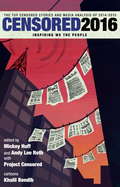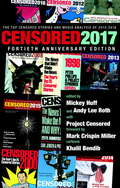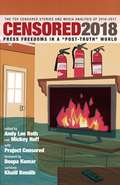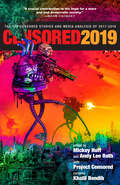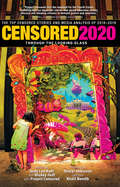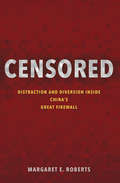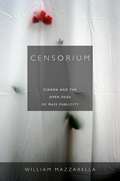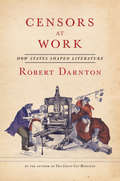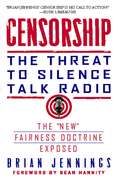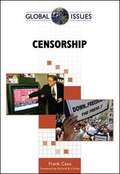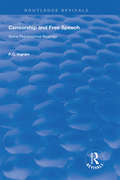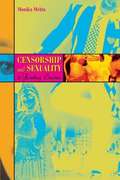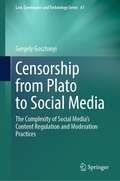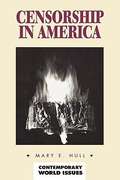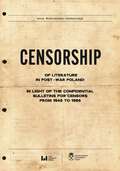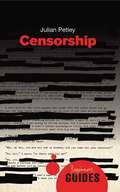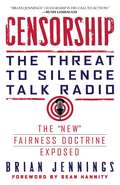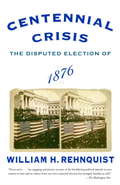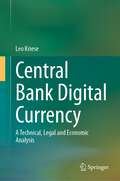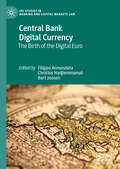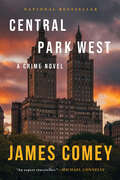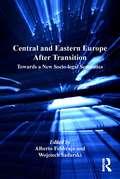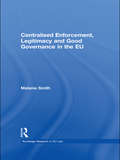- Table View
- List View
Censored 2016
by Project Censored Mickey Huff Andy Lee RothThe annual yearbook from Project Censored features the year's most underreported news stories, striving to unmask censorship, self-censorship, and propaganda in corporate-controlled media outlets. Censored 2016 features the top-25 most underreported stories, as voted by scholars, journalists, and activists across the country and around the world, as well as chapters exploring timely issues from the previous year with more in-depth analysis.
Censored 2017
by Khalil Bendib Project Censored Mickey Huff Andy Lee RothThe annual yearbook from Project Censored features the year's most underreported news stories, striving to unmask censorship, self-censorship, and propaganda in corporate-controlled media outlets. Featuring the top 25 most underreported stories, as voted by scholars, journalists, and activists across the country and around the world, as well as chapters exploring timely issues from the previous year with more in-depth analysis.From the Trade Paperback edition.
Censored 2018: The Top Censored Stories and Media Analysis of 2016-2017
by Khalil Bendib Project Censored Mickey Huff Andy Lee Roth"[Censored] should be affixed to the bulletin boards in every newsroom in America. And, perhaps, read aloud to a few publishers and television executives."--RALPH NADERThe annual yearbook from Project Censored features the year's most underreported news stories, striving to unmask censorship, self-censorship, and propaganda in corporate-controlled media outlets. Featuring the top 25 most underreported stories, as voted by scholars, journalists, and activists across the country and around the world, as well as chapters exploring timely issues from the previous year with more in-depth analysis.
Censored 2019: The Top Censored Stories and Media Analysis of 2017-2018
by Khalil Bendib Mickey Huff Andy Lee Roth Abby Martin“For more thanforty years, Project Censored has been our watchdog on the establishment media, casting its eye on how the information that we receive––and don’t receive––shapes our democracy. We need it more than ever today!”—Christopher Finan, Executive Director, National Coalition Against Censorship (NCAC) THESE ARE JUST A FEW OF THE STORIES PRESENTED IN CENSORED 2019:--“Open-Source” Intelligence Secrets Sold to Highest Bidders--ICE Intends to Destroy Records of Inhumane Treatment of Immigrants--Indigenous Communities around World Helping to Win Legal Rights of Nature--FBI Racially Profiling “Black Identity Extremists”--The Limits of Negative News and Importance of Constructive Media DID YOU KNOW THAT SINCE 1998 THE US GOVERNMENT SPENT $21 TRILLION IT CAN’T ACCOUNT FOR? Or that Internet co-ops are mobilizing poor communities to resist net neutrality rollbacks? How about the health risks of wireless tech that cell phone companies have covered up, or the opiate crisis that Big Pharma knowingly unleashed?Haven’t heard the news? Neither did the rest of the world. That’s because these and countless other news items are suppressed or ignored by our nation’s “free press” every day. For the past forty-three years, Project Censored has been unearthing the buried stories that corporate media deem unfit to print—and debunking the “fake news” governments and corporations use to consolidate their power—to promote well-informed citizen action and critical media literacy.This year’s Project Censored yearbook features:-- “Vetting Free Speech” by Sally Gimson, Layli Foroudi, and Sean Gallagher-- “#TimesUp: Breaking the Barriers of Sexual Harassment in Corporate Media for You and #MeToo” by Julie Frechette-- “Data Activism through Community Mapping and Data Visualization” by Dorothy Kidd-- “How Mainstream Media Evolved into Corporate Media” by Peter Phillips-- “Campus–Newsroom Collaborations” by Patricia W. Elliott-- “The Public and Its Problems” by Susan MaretPlus Junk Food News, News Abuse, and Media Democracy in Action.In a time of decline in the rule of law and democratic safeguards, Project Censored offers a constructive alternative to the “fake news” blues, holding the corporate media to account for its negative bias, propaganda for wealth and power, and outright censorship.
Censored 2020
by Mickey HuffIn the midst of Trump's attacks on the media, comes this look at the rigorous, independent reporting of the year's most underreported news stories.While the country's president displays a brazen disregard for the First Amendment and routinely demonizes the press as "the enemy of the people," Censored 2020 looks beyond Donald Trump's dizzying contempt for the truth to clarify the corporate media's complicity in misinforming the American public--while also providing a clear vision of a better future, based on rigorous, trustworthy independent reporting that presents a fuller picture of truth. With a discerning eye, Censored 2020 focuses the public's attention on the most important but underreported news stories of 2018-2019. These stories expose the corporate news media's systemic blind spots while highlighting the crucial role played by independent journalists in providing the kind of news necessary for informed, engaged citizens. The book also examines this year's lowlights in "junk food news" and "news abuse"--further revealing how corporate news often functions as propaganda--as well as highlights of exemplary organizations that champion "Media Democracy in Action." Additional chapters address the importance of constructive journalism, the untold story of Kashmir, news coverage of LGBTQ issues in the Trump era, "fake news" as a Trojan horse for censorship, and online memes as aform of political communication.
Censored Books: Critical Viewpoints
by John D. Keane Nicholas J. Karolides Lee BurressShort essays on a myriad of books which have been censored in the past.
Censored: Distraction and Diversion Inside China`s Great Firewall
by Margaret E. RobertsA groundbreaking and surprising look at contemporary censorship in China <P><P>As authoritarian governments around the world develop sophisticated technologies for controlling information, many observers have predicted that these controls would be ineffective because they are easily thwarted and evaded by savvy Internet users. In Censored, Margaret Roberts demonstrates that even censorship that is easy to circumvent can still be enormously effective. <P><P>Taking advantage of digital data harvested from the Chinese Internet and leaks from China's Propaganda Department, this important book sheds light on how and when censorship influences the Chinese public.Roberts finds that much of censorship in China works not by making information impossible to access but by requiring those seeking information to spend extra time and money for access. <P><P>By inconveniencing users, censorship diverts the attention of citizens and powerfully shapes the spread of information. When Internet users notice blatant censorship, they are willing to compensate for better access. <P><P>But subtler censorship, such as burying search results or introducing distracting information on the web, is more effective because users are less aware of it. Roberts challenges the conventional wisdom that online censorship is undermined when it is incomplete and shows instead how censorship's porous nature is used strategically to divide the public. <P><P>Drawing parallels between censorship in China and the way information is manipulated in the United States and other democracies, Roberts reveals how Internet users are susceptible to control even in the most open societies. Demonstrating how censorship travels across countries and technologies, Censored gives an unprecedented view of how governments encroach on the media consumption of citizens.
Censorium: Cinema and the Open Edge of Mass Publicity
by William MazzarellaIn the world of globalized media, provocative images trigger culture wars between traditionalists and cosmopolitans, between censors and defenders of free expression. But are images censored because of what they mean, what they do, or what they might become? And must audiences be protected because of what they understand, what they feel, or what they might imagine? At the intersection of anthropology, media studies, and critical theory, Censorium is a pathbreaking analysis of Indian film censorship. The book encompasses two moments of moral panic: the consolidation of the cinema in the 1910s and 1920s, and the global avalanche of images unleashed by liberalization since the early 1990s. Exploring breaks and continuities in film censorship across colonial and postcolonial moments, William Mazzarella argues that the censors' obsessive focus on the unacceptable content of certain images and the unruly behavior of particular audiences displaces a problem that they constantly confront yet cannot directly acknowledge: the volatile relation between mass affect and collective meaning. Grounded in a close analysis of cinema regulation in the world's largest democracy, Censorium ultimately brings light to the elusive foundations of political and cultural sovereignty in mass-mediated societies.
Censors at Work: How States Shaped Literature
by Robert DarntonThis absorbing history by a brilliant scholar and writer deepens our understanding of how censorship works. With his uncanny ability to spark life in the past, Robert Darnton re-creates three historical worlds in which censorship shaped literary expression in distinctive ways. In eighteenth-century France, censors, authors, and booksellers collaborated in making literature by navigating the intricate culture of royal privilege. Even as the king's censors outlawed works by Voltaire, Rousseau, and other celebrated Enlightenment writers, the head censor himself incubated Diderot's great Encyclopedie by hiding the banned project's papers in his Paris townhouse. Relationships at court trumped principle in the Old Regime. Shaken by the Sepoy uprising in 1857, the British Raj undertook a vast surveillance of every aspect of Indian life, including its literary output. Years later the outrage stirred by the British partition of Bengal led the Raj to put this knowledge to use. Seeking to suppress Indian publications that it deemed seditious, the British held hearings in which literary criticism led to prison sentences. Their efforts to meld imperial power and liberal principle fed a growing Indian opposition. In Communist East Germany, censorship was a component of the party program to engineer society. Behind the unmarked office doors of Ninety Clara-Zetkin Street in East Berlin, censors developed annual plans for literature in negotiation with high party officials and prominent writers. A system so pervasive that it lodged inside the authors' heads as self-censorship, it left visible scars in the nation's literature. By rooting censorship in the particulars of history, Darnton's revealing study enables us to think more clearly about efforts to control expression past and present.
Censorship
by Sean Hannity Brian JenningsFreedom of speech. It is our most cherished privilege as Americans, guaranteed by the First Amendment to the U.S. Constitution since 1791. But our current presidential administration threatens to sharply curtail or silence altogether the freedom of expression that distinguishes America from the average dictatorship. What is under direct attack? Conservative talk radio. During the Reagan administration, conservative talk radio burgeoned when the FCC voted to stop enforcing the Fairness Doctrine, which required all licensed broadcasters to present "balanced" viewpoints on controversial issues. The format was a smash hit, attracting an estimated 50 million listeners weekly. Popular, profitable, outspoken, powerful, influential--it's what the American people wanted, and its success was the Democrats' worst nightmare. Now, the principles underlying the Fairness Doctrine threaten to be reinstated. Under cover of being "fair," they will be used as a means of censorship, allowing government to influence who owns our airwaves and thus controls the content, a mandate with far-reaching implications for all media--indeed, for freedom of speech for all Americans.
Censorship
by Frank CasoThe censorship practices of the United States, Russia, China, Zimbabwe and Egypt are summarized from a global perspective, and Caso (Wesleyan U.) notes that the electronic era has had little effect on these policies and practices. The reasons for censorship are explored and compared in each case, including suppression of public dissent, protecting religious dogma and even the rights of parents to protect their children from corrupting influences. Biographical information on key historical figures who are linked with censorship issues is also included in this volume, which is designed for students of law, global studies and history. Annotation ©2008 Book News, Inc., Portland, OR (booknews.com)
Censorship and Free Speech: Some Philosophical Bearings (Routledge Revivals)
by P.G. IngramThis title was first published in 2000: While there are many philosophical studies of free speech, treating censorship historically, politically, or by the medium restricted (films, press etc.), little has been written on censorship and free speech dealing with issues philosophically and approaching them from the perspective of restrictions. This book treats censorship and free speech as a problem of ideas, examining the issues as an aspect of our wider social and political lives and critically examining mainstream arguments against censorship. This unique approach takes issue with the concept of censorship as something aberrant, to examine where the limits of free speech lie in ensuring individual development and collective harmony. Examining the possibility of accepting censorship positively to serve legitimate purposes, it will be a thought-provoking challenge to prescriptive arguments for free speech.
Censorship and Sexuality in Bombay Cinema
by Monika MehtaIndia produces an impressive number of films each year in a variety of languages. Here, Monika Mehta breaks new ground by analyzing Hindi films and exploring the censorship of gender and heterosexuality in Bombay cinema. She studies how film censorship on various levels makes the female body and female sexuality pivotal in constructing national identity, not just through the films themselves but also through the heated debates that occur in newspapers and other periodicals. The standard claim is that the state dictates censorship and various prohibitions, but Mehta explores how relationships among the state, the film industry, and the public illuminate censorship's role in identity formation, while also examining how desire, profits, and corruption are generated through the act of censoring. Committed to extending a feminist critique of mass culture in the global south, Mehta situates the story of censorship in a broad social context and traces the intriguing ways in which the heated debates on sexuality in Bombay cinema actually produce the very forms of sexuality they claim to regulate. She imagines afresh the theoretical field of censorship by combining textual analysis, archival research, and qualitative fieldwork. Her analysis reveals how central concepts of film studies, such as stardom, spectacle, genre, and sound, are employed and (re)configured within the ambit of state censorship, thereby expanding the scope of their application and impact.
Censorship from Plato to Social Media: The Complexity of Social Media’s Content Regulation and Moderation Practices (Law, Governance and Technology Series #61)
by Gergely GosztonyiIn many countries, censorship, blocking of internet access and internet content for political purposes are still part of everyday life. Will filtering, blocking, and hacking replace scissors and black ink? This book argues that only a broader understanding of censorship can effectively protect freedom of expression.For centuries, church and state controlled the content available to the public through political, moral and religious censorship. As technology evolved, the legal and political tools were refined, but the classic censorship system continued until the end of the 20th century. However, the myth of total freedom of communication and a law-free space that had been expected with the advent of the internet was soon challenged. The new rulers of the digital world, tech companies, emerged and gained enormous power over free speech and content management. All this happened alongside cautious regulation attempts on the part of various states, either by granting platforms near-total immunity (US) or by setting up new rules that were not fully developed (EU). China has established the Great Firewall and the Golden Shield as a third way. In the book, particular attention is paid to developments since the 2010s, when Internet-related problems began to multiply. The state’s solutions have mostly pointed in one direction: towards greater control of platforms and the content they host. Similarities can be found in the US debates, the Chinese and Russian positions on internet sovereignty, and the new European digital regulations (DSA-DMA). The book addresses them all. This book will be of interest to anyone who wants to understand the complexities of social media’s content regulation and moderation practices. It makes a valuable contribution to the field of freedom of expression and the internet, showing that, with different kinds of censorship, this essentially free form of communication has come – almost by default – under legal regulation and the original freedom may have been lost in too many countries in recent years.
Censorship in America
by Mary E. HullThis book gives high school and undergraduate students a background of uncontested information and representative statements of the positions taken by opponents on current issues. Discusses why works of art and literature are considered controversial, profiles major figures who advocate or oppose censorship, reviews litigation and proposed legislation, lists and evaluates print and non-print information sources, and identifies organizations. Hull specializes in current events and books for young adults. Annotation c. Book News, Inc., Portland, OR (booknews.com)
Censorship of Literature in Post-War Poland: In Light of the Confidential Bulletins for Censors from 1945 to 1956
by Anna Wiśniewska-GrabarczykCensorship of Literature in Post-War Poland in the Light of Confidential Bulletins for Censors from 1945 to 1956, reconstructs and presents ways to censor literature (and, contextually, other fields of art) submitted for evaluation to the main censorship office in Poland during the first 11 years after WWII. The source material consists of confidential Bulletins – periodicals addressed to the officials of the censorship office.The book is divided into three main parts, each preceded by an introduction and concluded with an extensive bibliography.Part One: In Search of a Definition: What Were the Confidential Bulletins for Censors? Characteristics of the Source Material presents basic information about the Bulletins – their goals, structure, and material presented in them. The analysis concludes with the definition of confidential Bulletins of the censorship office.Part Two: Literature and Current Literary Phenomena Preconstructs the image of literary life presented in the Bulletins from 1945 to 1956. On numerous occasions, the Bulletins provided helpful guidelines in censorship practice. They discussed the job of dealing with literary texts and often gave examples of works published just a few months earlier or those that had not passed the scrutiny. The Bulletins published materials discussing literary phenomena and other issues. The ones previously unaccounted for (including film, radio and theatre), as well as the institutional background of control, I discuss briefly in the last part – Camera Censorica. What Else was Discussed in the Bulletins?.The materials presented in these confidential periodicals came from the Bulletins headquarters, field offices, and the work of censors. At the end of my study, Author let the censors speak. In the chapter Before the Proper Summary, or… the Censor as an Artist: The Literary Work of the Functionaries of Mysia Street and Its Environs, Author cite evidence of the literary ambitions of political functionaries – as censors had been called in the 1950s.
Censorship, Inc.: The Corporate Threat to Free Speech in the United States
by Lawrence SoleyThe First Amendment of the U.S. Constitution is a landmark in the defense of free speech against government interference and suppression. In this book we come to see how it also acts as a smokescreen behind which a more dangerous and insidious threat to free speech can operate. Soley shows how as corporate power has grown and come to influence the issues on which ordinary Americans should be able to speak out, so new strategies have developed to restrict free speech on issues in which corporations and property-owners have an interest. Censorship, Inc. is a comprehensive examination of the vast array of corporate practices which restrict free speech in the United States today in fields as diverse as advertsing and the media, the workplace, community life, and the environment. Soley also shows how these threats to free speech have been resisted by activism, legal argument, and through legislation. Grounded in extensive research into actual cases, this book is at the same time a challenge to conventional thinking about the nature of censorship and free speech.
Censorship: A Beginner's Guide (Beginner's Guides)
by Julian PetleyOffering a potted history of censorship from the execution of Socrates in 399BC to the latest in internet filtering, Petley also explains how today's media monopolies and moguls censor by limiting what news/entertainment they impart. Julian Petley is professor of Film and Television at Brunel University, UK. He is the author of several books on censorship.
Censorship: The Threat to Silence Talk Radio
by Sean Hannity Brian Jennings"Talk radio is the American voter." -- Rush Limbaugh Freedom of speech. It is our most cherished privilege as Americans, guaranteed by the First Amendment to the U. S. Constitution since 1791. But at the dawn of a new presidential administration, an epic battle is looming -- a battle for our airwaves that could sharply curtail or silence altogether the freedom of expression that distinguishes America from the average dictatorship. The target of this battle is conservative talk radio. If key Democrats have their way, the principles of the Federal Communications Commission's Fairness Doctrine will once again be enforced and allow government to control the content heard on free radio, a mandate that will have far-reaching implications for all media. During the Reagan administration the FCC voted to stop enforcing the Fairness Doctrine, which required all licensed broadcasters to present "balanced" viewpoints on controversial issues. Conservative talk radio burgeoned, giving rise to the father of conservative talk, Rush Limbaugh, and such hosts as Sean Hannity, Mark Levin, Michael Medved, Neal Boortz, Laura Ingraham, and others. The format was a smash hit -- resonating with listeners from coast to coast and giving a powerful voice to the conservative movement. Soon such programming, attracting an estimated 50 million listeners weekly, dominated the airwaves where liberal talk radio failed. Popular, profitable, outspoken, powerful, influential -- it's what the American people wanted, and its success was the Democrats' worst nightmare. Now, the principles of the Fairness Doctrine threaten to be reinstated -- if not directly, then through back-door tactics involving ownership of stations. Under cover of being "fair," they will prove to be anything but: They will be used as a means of censorship by those with contempt for conservative talk radio. With our current Congress firmly under Democratic control, the future of talk radio -- indeed, freedom of speech for all Americans -- is under direct attack.
Centennial Crisis
by William H. RehnquistNear midnight on Election Day in November 1876, the returns coming into Republican National headquarters signaled a victory for the Democratic presidential candidate, Samuel J. Tilden. But alert Republican leaders saw that if all the states still doubtful or disputed went for their candidate, Rutherford B. Hayes would be elected. Word was sent out to four southern states that their returns were crucial for a Hayes victory. Thus Chief Justice William Rehnquist begins this remarkable account of one of American's greatest political dramas, a crisis that was not resolved for nearly four months, on March 2, 1877, only two days before Inauguration Day. In his gripping story, Rehnquist tells how each party maneuvered to buy votes in the southern states, how the country slid into Congressional, judicial and public turmoil, and how the creation in January of an Electoral Commission (comprised of five Democrats, five Republicans and five Supreme Court justices) was opposed by both candidates. When that body's deciding vote was cast by Justice Joseph Bradley, public outcry reached such a fever pitch that the presidential swearing-in had to be held on a Sunday in near secrecry. Reaching beyond the history of a contentious election, the Chief Justice describes the political climate and economy of America in the 1870's, packing his narrative with biographical sketches of the central participants and opening a window on events in that decade that have long been overlooked. In a compelling epilogue we learn the occasions when Presidents, ranging from George Washington to Lyndon Johnson, have asked Supreme Court justices to arbitrate disputes, settle treaties or serve on investigating commissions. Almost always the justices were berated and attacked for their decisions. Would it be better for them to have refused the president’s request? The Chief Justice has some surprising answers.
Central Bank Digital Currency: A Technical, Legal and Economic Analysis
by Leo KrieseThis book offers a deeper understanding of digitisation and innovative technologies in the financial sector. It focuses on a digital version of sovereignly created money that is accessible to the broad public. This central bank digital currency (CBDC) raises several questions. Will CBDC lead to public surveillance of the citizens? What is digital money in the legal sense? And what is the difference to already existing forms of digital money? This book addresses main questions associated with central bank digital currency by providing background information as well as in-depth analyses. The book introduces a basic understanding of innovative technologies such as the distributed ledger technology. It shows how a system of money can be created and what roles each participant has. Taking an economic point of view, the book demonstrates the monetary policy in the euro area and examines how a digital version of public money could affect the transmission mechanism as well as the financial stability. Could CBDC lead to a "digital bank run"? Could it replace the established financial intermediaries such as banks? What would that mean to the economy?Mainly, the book focuses on the legal issues of CBDC. Which is the competent institution for establishing digital public money? Will digital money change the way of how we handle financial data? Also, the book examines the legal usability of CBDC in the economy. How can digital money based on innovative technologies be transferred in accordance with the law? Can a debtor of a monetary claim flee into the digital currency? This book addresses the public and private sector participants as well as the legislators on how to handle CBDC. Most important, the book addresses everyone interested in digitisation and innovative financial technology who wants to gain a deeper understanding of the next big evolvement of money.
Central Bank Digital Currency: The Birth of the Digital Euro (EBI Studies in Banking and Capital Markets Law)
by Filippo Annunziata Christos Hadjiemmanuil Bart JoosenThis book looks at the new phenomenon of Central Bank Digital Currency (CBDC) with a focus on the launch of the Digital Euro in the European Union. It contains treatment of the subject of CBDC from various perspectives, with each of the authors formulating viewpoints regarding this new phenomenon. It also offers an insightful assessment of the legal status of a central bank digital currency, engaging in the theoretical effort of testing the legal implications of the birth of a digital complement to cash. The chapters focus on the rationale for a digital Euro, its ability to aid financial inclusion, the constitutional foundations of the CBDC, demands of a digital euro on the side of the beneficiaries of the retail payment system, and the “mechanics” of the CBDC in relation to its issuance and governance. It will be of interest to financial services, banking, financial regulation, and monetary policy researchers and scholars alongside lawyers and policymakers.
Central Park West: A Crime Novel
by James ComeyA Newsweek and Reader's Digest most-anticipated read of 2023. In the thrilling first crime novel from the former director of the FBI, a murder investigation reveals deadly connections between high-ranking politicians and the mafia. The gripping crime fiction debut from former FBI director James Comey takes readers deep inside the world of lawyers and investigators working to solve a murder while navigating the treacherous currents of modern politics and the mob. When a years-long case against a powerful mobster finally cracks and an unimpeachable witness takes the stand, federal prosecutor Nora Carleton is looking forward to putting the defendant away for good. The mobster, though, has other plans. As the witness’s testimony concludes, a note is passed to the prosecution offering up information into the assassination of a disgraced former New York governor, murdered in his penthouse apartment just days before. It’s enough to blow the case wide open, and to send Nora into a high-stakes investigation of conspiracy, corruption, and danger. Drawing from the author’s decades in federal law enforcement, including his years in Manhattan as a mob prosecutor and later the chief federal prosecutor, Central Park West is a fast-paced legal thriller with an intriguing plot enriched by real-life details and experiences. That unique perspective gives the novel much of its allure, but it’s the unforgettable characters, shocking twists, and courtroom scenes as authentic as they are dramatic that will leave readers looking forward to more from this bold new talent in the genre.
Central and Eastern Europe After Transition: Towards a New Socio-legal Semantics (Studies In Modern Law And Policy Ser.)
by Wojciech SadurskiHow have national identities changed, developed and reacted in the wake of transition from communism to democracy in Central and Eastern Europe? Central and Eastern Europe After Transition defines and examines new autonomous differences adopted at the state and the supranational level in the post-transitional phase of the post-Communist area, and considers their impact on constitutions, democracy and legal culture. With representative contributions from older and newer EU members, the book provides a broad set of cultural points for reference. Its comparative and interdisciplinary approach includes a useful selection of bibliographical resources specifically devoted to the Central Eastern European countries' transitions.
Centralised Enforcement, Legitimacy and Good Governance in the EU (Routledge Research in EU Law)
by Melanie SmithArticle 226 EC is the central mechanism of enforcement in the EC Treaty, and has remained unchanged since the original Treaty of Rome. It provides the European Commission, as guardian of the Treaty, with a broad power of policing Member States’ conduct. Article 226 has been traditionally characterised as an arena of secretive negotiation focused on the sole function of effective enforcement. This study seeks to move beyond this approach by characterising Article 226 as a multi-functional mechanism within the Treaty. It does this by examining the central mechanism of enforcement through the normative lenses of legitimacy, good administration and good governance. Centralised Enforcement, Legitimacy and Good Governance in the EU is interdisciplinary in nature, examining law in its political context. It focuses on how the institutions interact and react to competing policy pressures, and explores the tensions that lie at the heart of legitimacy in the actions of public actors by engaging with concepts such as democracy, legitimacy and good administration. Scholars and policy-makers whose work explores Article 226 will find this work especially relevant. It will also appeal to those who are interested in enforcement and regulation in the international/EU arena, as well as those whose work considers concepts such as good governance, legitimacy, and accountability in the EU. It is also relevant to scholars engaged in the study of institutions and processes of interaction and change.
